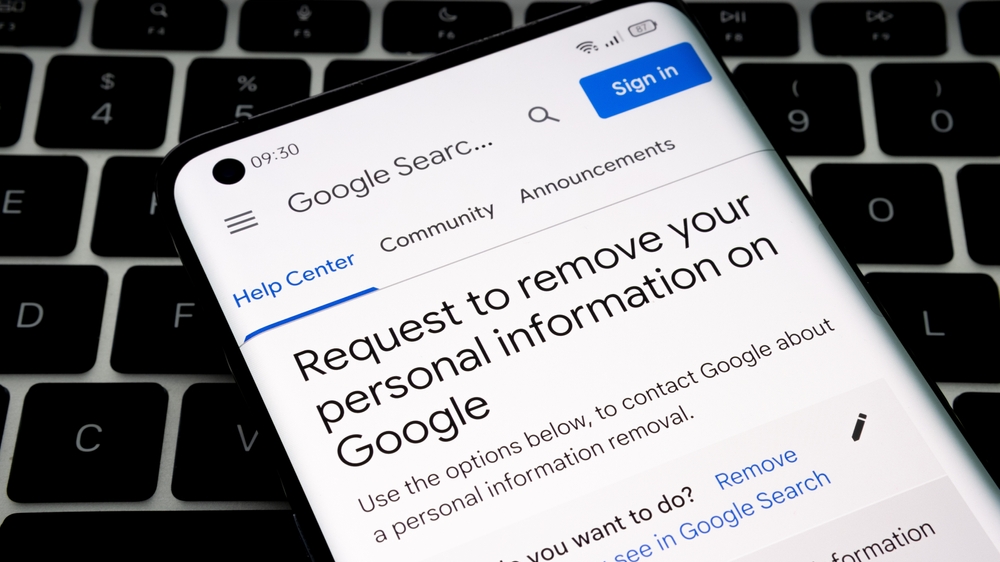How to remove your personal data from Google
Removing personal data from Google has now become easier

If you’re a public figure, a business, or someone who owns a personal brand, it’s important to have an online presence. However, you might find it unsettling to have your personal information like contact details, address, and financial details available to strangers with a few Google searches.
Luckily, Google now offers two methods through which you can easily remove any personal data about you. Keep reading to find out the steps to remove personal information from Google.
Why might you want to remove your personal data from Google?
Privacy and security are the primary reasons you wouldn’t want your data to be public. Here are some other reasons why removing your data from Google is important:
Privacy concerns: You might not want your personal information like date of birth, bank details, or address in the public domain. Removing these data from Google can reduce the risks of cyberstalking, identity theft, harassment, and other privacy-related risks.
Data security: Scammers can use your personal information, like your social security number or name, for unauthorized access, phishing attacks, and data breaches. The smaller your digital footprint, the lesser the chances of becoming a cyber victim.
To maintain a professional image: Sometimes, the information about you might be negative, inaccurate, or outdated. Taking out these data will help you present more professional and accurate info to your followers, colleagues, or clients.
What information can you remove from Google?
For Google to take action, your request must fall into one of the following criteria:
Get instant access to breaking news, the hottest reviews, great deals and helpful tips.
- Contact information
- Bank account or credit card numbers
- Fake pornographic content
- Government-issued ID numbers
- Copyright material
- Explicit images featuring minors.
- Images of a handwritten signature or ID documents
- Confidential login credentials
How to remove your personal data from Google?
Enter your name in the Google search bar. If you find any search results with your information on it, note those results. Copy these links on a notepad and take screenshots of the results that violate your privacy.
It’s also a good idea to look into Google Photos. Click on the images tab on the search results page to find your images or other details attached to them.
Option 1: Request to remove your information using online form
If you find relevant information about you in your Google search, you can directly fill out Google’s content removal form.
Step 1: You’ll first have four options to select from. Since you want to remove personal information, select the second option that says, “Content contains your personal information”.
Step 2: Then, select your residence country and click on “Next”.
Step 3: Next, you’ll need to select the type of personal information you want to remove. Your options include address, phone number, and/or e-mail address, along with others mentioned above.
Step 4: You’ll then have to specify if the content you want to remove is being shared with malicious or threatening intent.
Step 5: On the last page, you’ll need to provide some more information such as contact details, email address, the URL of the specific content you want to get removed, URL(s) to the Google search results page, the search terms you’ve used, and screenshots of the pages you are referring to.
Step 6: Click on “Submit” after filling out all the details correctly.
After sending the form, Google will analyze your request according to the policy requirements, and later, they will send you a confirmation link.
However, if your information is posted on a government website or a news article, Google won’t remove it. It's also worth noting that these steps are for removing content from search results – no matter how powerful it is, Google can't remove a web page from the internet.
Option 2: Using the “results about you” dashboard
Step 1: Go to the “results about you” dashboard from your Google profile and click on Get Started.
Step 2: Google will provide a form with the instructions to follow. Carefully fill out the form and provide your correct information, including your name and at least one contact detail.
Step 3: After entering the details, click on “Submit”.
Step 4: Google will then look for the information that matches your results in the search results. If something similar pops up, click the “Request to Remove” tab near the search results.
After sending the request, Google will cross-check the details and make sure the site isn’t owned by an educational or government institution. After a few days, the content will be removed. However, if Google rejects your request, you can always resubmit it with more information to back it up.
Contact the website owner
Remember, Google can only remove your personal information from appearing on the search results. If a website contains your information, Google cannot remove it from the website itself.
In this case, you can contact the website owner. You’ll find an email address or a Contact Us page on the website, and if there’s no contact information available on the website, use a service like Whois to find the domain or the owner.
After finding the website owner, politely ask them to remove or update the information. If the owner doesn’t respond or is not willing to remove the information, you can ask Google to remove it from its search results (as mentioned earlier).
Monitor your online presence
Make it a habit to search your details like address, name, email, phone number, and the likes on Google every once in a while. This will help you take timely action to prevent spreading inaccurate or outdated content about you to the public.
You can also use Google Alerts, where Google will notify you whenever someone posts your details in Google. However, it's not always possible to completely hide your information from the internet; new sources might pop up, so closely watch your online reputation.
Tools like the best VPN services are able to improve your anonymity online, but the most reliable way of keeping your info private online is to avoid posting it as much as possible.

Krishi is a VPN writer covering buying guides, how-to's, and other cybersecurity content here at Tom's Guide. His expertise lies in reviewing products and software, from VPNs, online browsers, and antivirus solutions to smartphones and laptops. As a tech fanatic, Krishi also loves writing about the latest happenings in the world of cybersecurity, AI, and software.
